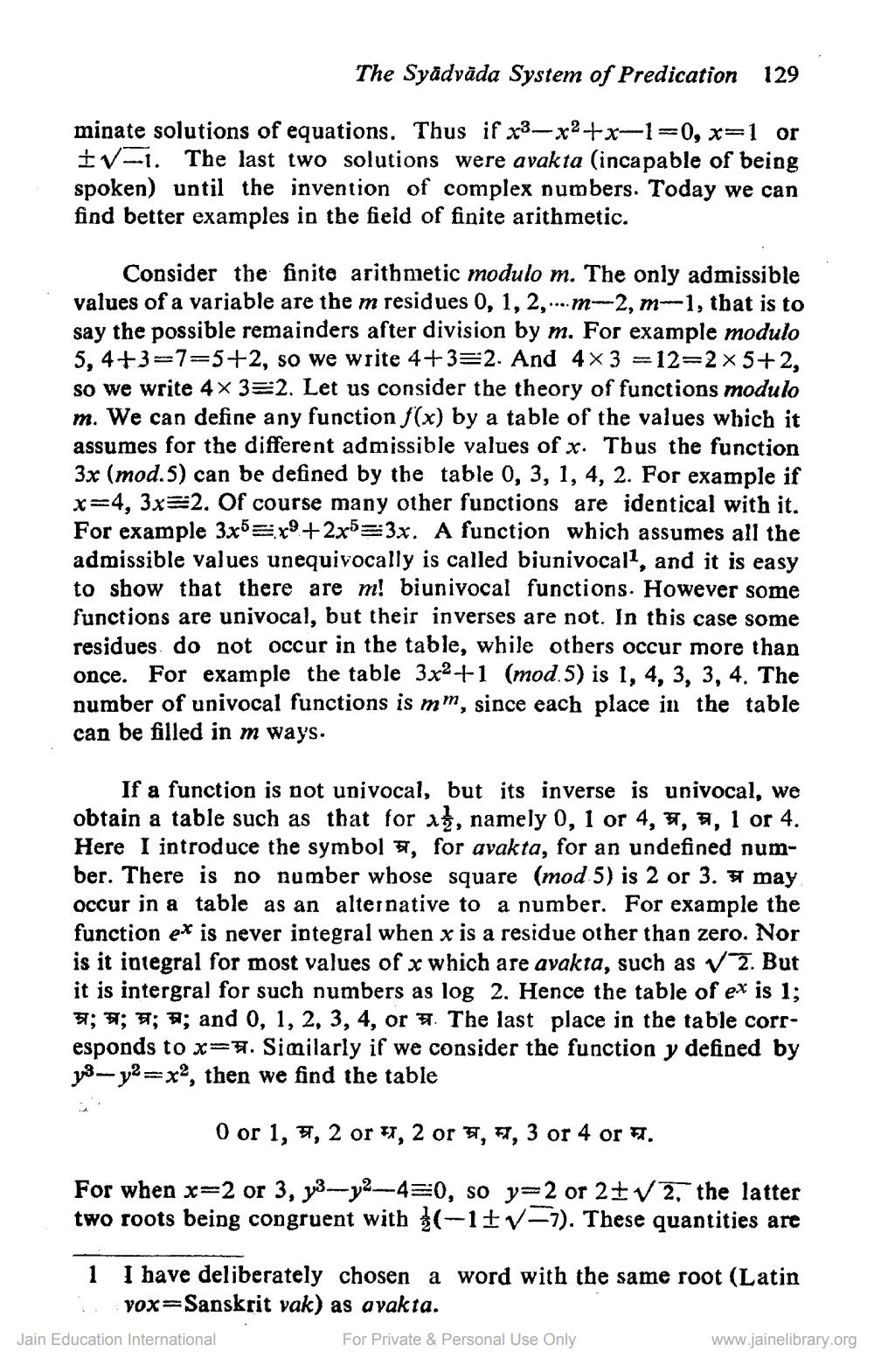________________
The Syädvāda System of Predication
129
minate solutions of equations. Thus if x3x2+x-1=0, x=1 or IV . The last two solutions were avakta (incapable of being spoken) until the invention of complex numbers. Today we can find better examples in the field of finite arithmetic.
Consider the finite arithmetic modulo m. The only admissible values of a variable are the m residues 0, 1, 2,...m-2, m-1, that is to say the possible remainders after division by m. For example modulo 5,4+3=7=5+2, so we write 4+3=2. And 4x3 =12=2*5+2, so we write 4x3=2. Let us consider the theory of functions modulo m. We can define any function f(x) by a table of the values which it assumes for the different admissible values of x. Thus the function 3x (mod.5) can be defined by the table 0, 3, 1, 4, 2. For example if x=4, 3x=2. Of course many other functions are identical with it. For example 3x5 5x9+2x533x. A function which assumes all the admissible values unequivocally is called biunivocall, and it is easy to show that there are m! biunivocal functions. However some functions are univocal, but their inverses are not. In this case some residues do not occur in the table, while others occur more than once. For example the table 3x2 +1 (mod.5) is 1, 4, 3, 3, 4. The number of univocal functions is mm, since each place in the table can be filled in m ways.
If a function is not univocal, but its inverse is univocal, we obtain a table such as that for at, namely 0, 1 or 4, 5, 9, 1 or 4. Here I introduce the symbol 5, for avakta, for an undefined number. There is no number whose square (mod.5) is 2 or 3. = may occur in a table as an alternative to a number. For example the function et is never integral when x is a residue other than zero. Nor is it integral for most values of x which are avakta, such as v 2. But it is intergral for such numbers as log 2. Hence the table of ex is 1; 37; 9; 7; =; and 0, 1, 2, 3, 4, or 7. The last place in the table corresponds to x=#. Similarly if we consider the function y defined by 23-ye=x", then we find the table
O or 1, 5, 2 or 1, 2 or 57, F1, 3 or 4 or 57.
For when x=2 or 3, 23-ya-450, so y=2 or 2+V2, the latter two roots being congruent with :(-1 v -7). These quantities are
1 I have deliberately chosen a word with the same root (Latin
i vox=Sanskrit vak) as avakta. Jain Education International For Private & Personal Use Only
www.jainelibrary.org




